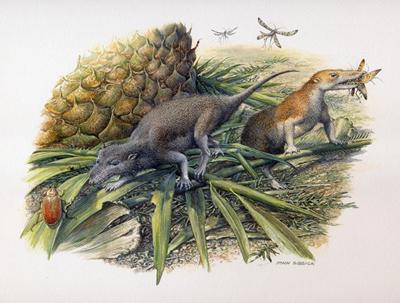Pioneering analysis of ancient mammal teeth uncovers unexpected reptile-like lives

Powerful X-ray imaging of 200 million-year-old mammal teeth has rewritten what is understood about our earliest ancestors.
The results indicate the small creatures had a maximum lifespan of up to 14 years, suggesting they functioned like reptiles, leading less active but much longer lives.
Dr Elis Newham, now a Research Associate at the University of Bristol, led the study during his time as a PhD student at the University of Southampton when he was co-supervised by the School of Engineering’s Dr Philipp Schneider.
The international study scanned the tiny teeth of two of the earliest mammals, Morganucodon and Kuehneotherium, which lived alongside early dinosaurs. The X-rays allowed the team to study growth rings in their tooth sockets, deposited every year like tree rings, which could be counted to tell us how long these animals lived.
Dr Newham says: “We made some amazing and very surprising discoveries. It was thought the key characteristics of mammals, including their warm-bloodedness, evolved at around the same time.
“By contrast, our findings clearly show that, although they had bigger brains and more advanced behaviour, they didn’t live fast and die young but led a slower-paced, longer life akin to those of small reptiles, like lizards.”
Researchers took some 200 teeth specimens, provided by the Natural History Museum London and University Museum of Zoology Cambridge, to be scanned at the European Synchrotron Radiation Facility and the Swiss Light Source, among the world’s brightest X-ray light sources, in France and Switzerland, respectively.
Dr Schneider, Associate Professor in Biomedical Imaging, says: “Bone is a living tissue, containing fat and blood vessels, and the diameter of the canals comprising the vessels can tell us about the maximum possible blood flow available to an animal, critical for strenuous activities such as running.”
The research has been published in Nature Communications.